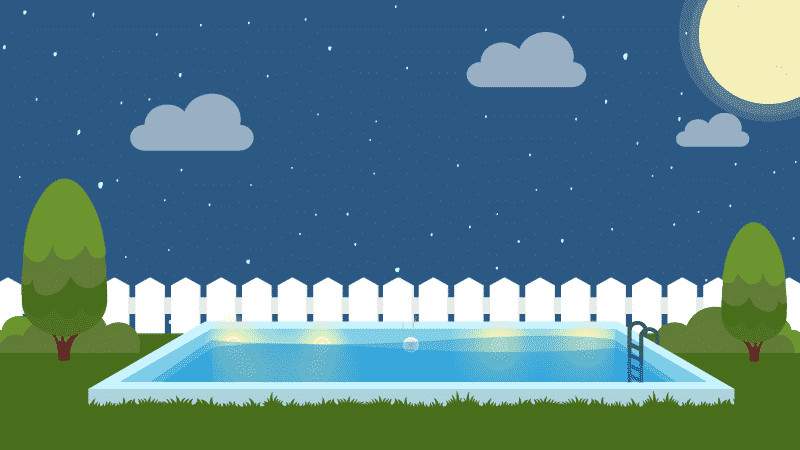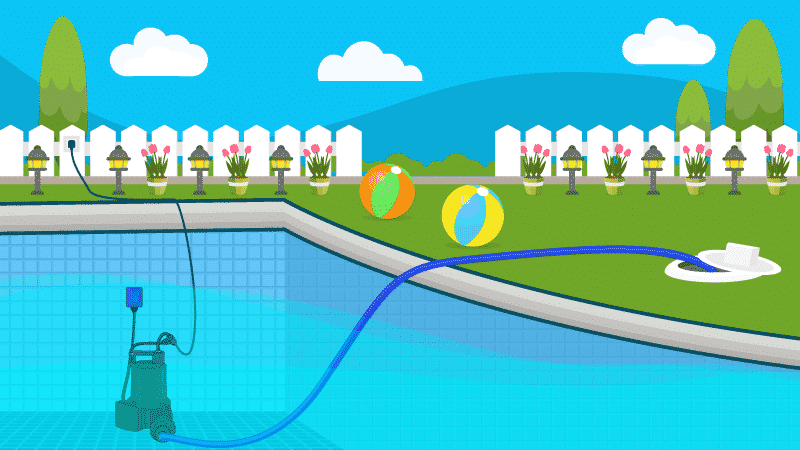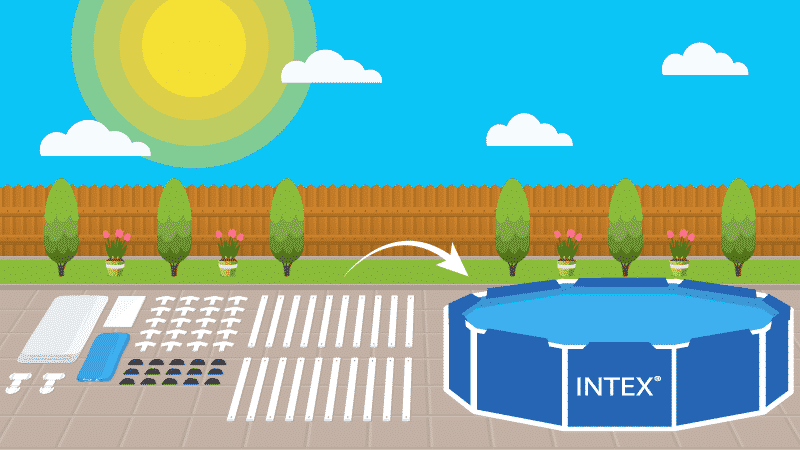How to Repair Plaster in a Pool Whether It’s Empty or Full
It’s time to get plastered! No, not like that. We’re talking about pool plaster repair here. No matter how well you care for your concrete pool, it will eventually develop cracks here and there. Or the plaster may become loose in spots and need to be replaced. Or maybe someone was roughhousing in the pool again, and gouged the wall with the lightsaber you told them to leave in the house.
Whatever the cause, you don’t want to leave those damaged spots for too long, or they’ll only get bigger. Before you know it, you could have a leak on your hands. But don’t worry. Repairing the plaster in your pool isn’t as difficult as it may sound.
How to Make the Pool Plaster Repairs
You’ve probably patched a spot or two on the drywall in your house. No big deal, right? But your pool? That might sound a little intimidating.
It doesn’t have to be. With the right tools and the proper procedures, you can make pool plaster repairs and avoid the expense of calling in a pro.
What You’ll Need
Make sure you have all the necessary supplies on hand before you begin the pool plaster repair process. You don’t want to have to stop midway to run to the hardware store, leaving pool cracks or curing plaster exposed for longer than they should be.
- submersible pump
- drainage hose
- hammer
- masonry chisel
- paint scraper
- large pliers
- angle grinder or masonry saw with a diamond blade
- pool trowel or putty knife
- grouting sponges
- wire brush
- small, soft-tipped brush, like a paint brush
- wooden pole
- spray bottle filled with water
- garden hose that reaches every area of the pool
- spray nozzle
- watering can
- soda ash
- regular muriatic acid
- underwater sealer
- pool plaster
- epoxy putty that can be used underwater
- bleach
- cement pigment (if necessary)
- swimming goggles
- acid safety mask
- ear protection
- safety goggles
- acid-resistant gloves
- heavy-duty work gloves
- long pants
- long-sleeved shirt
- acid-resistant boots
- old towels
- old bed sheet(s)
Important: Pool plaster repair can be dangerous as it calls for using tools like grinders, concrete saws, and acid. If you have any discomfort working with such tools or materials, don’t risk it. Call a pro. Your safety is more important than a crack in your pool’s surface.
Pool Plaster Repair: Empty Pool
If your pool’s plaster cracks far down on a wall or on the floor, or the crack is large enough to require cutting, you’ll have to empty your pool before you can fix it.
Follow detailed instructions for how to drain a pool to avoid damaging your inground pool.
- Put on your safety goggles, ear protection, and heavy-duty work gloves, and be sure to wear closed-toe shoes.
- Cut the crack out. Place the blade of the grinder or masonry saw on either side of the crack. Cut ½ inch deep, and diagonally toward the cut to create a dovetail. Then lengthen the crack by one inch on both ends. Remove the cut-out plaster.
- Rinse the crack, and allow it to dry. Once it’s dry, brush away any remaining dust or debris with the soft-tipped brush.
- Apply a bead of underwater sealer along the edges of the crack. Leave about ⅜ of an inch of space for the plaster you’ll use to fill the crack.
- Mix the pool plaster with the included bonding agent until it has the consistency of peanut butter—thick enough to stay in place, but not so thick you can’t easily spread it.
- Use a damp grouting sponge to lightly moisten the perimeter of the crack. Use the trowel or putty knife to apply the pool plaster, gently pushing it into the crack taking care to remove any air bubbles.
- Use the edge of the trowel or putty knife to scrape off any excess plaster. Dab the plaster with a damp grouting sponge to approximate the surface texture.
- Fill the pool. The plaster will cure better underwater. If you won’t be filling the pool for a few hours (maybe you have several cracks to repair), cover the patched spot with a damp towel or old bedsheet. If the plaster patch dries too quickly, it may shrink and crack again. Covering it will keep it from drying out until you fill the pool.
Pool Plaster Repair: Patching
It could be more than a crack or small spot that needs to be fixed. Sometimes, plaster will bubble, or become loose. You’ll have to empty the pool for this repair.
Follow detailed instructions for how to drain a pool to keep your pool from popping.
- Put on your safety goggles, ear protection, and heavy-duty work gloves, and be sure to wear long pants, long sleeves, and closed-toe shoes.
- Use the hammer and masonry chisel to remove spots of obviously loose plaster.
- Use the wooden pole to tap around the pool floor, and listen for a hollow sound, which indicates more loose plaster. If you find any, chisel them up as well.
- Clear away the plaster you’ve removed.
- Use the chisel to create a few divots in the surface of the area you’ll be patching. This will help the new plaster adhere to the surface.
- Apply an acid wash to the surface you’ll be working on. (With the pool empty, this is also a good time to acid wash the pool completely.)
- Measure the surface area you’re going to patch so you can prepare enough pool plaster.
- Mix the plaster to the consistency of peanut butter—thick enough to stay in place, but not so thick you can’t easily spread it.
- Add cement dye, if necessary, to match the current plaster color.
- Dab the surface to be repaired with a wet (but not dripping) grouting sponge, or spray the surface with a fine mist of water.
- Use the pool trowel to apply the plaster, pushing it into the divots you made with the chisel, as well as any corners.
- Push out any air bubbles and smooth the surface with the trowel, feathering the edges into the surrounding pool surface.
- Wait 15 minutes.
- Use the trowel to smooth the patched surface again. If it’s hot outside, or the patch has dried during the waiting period, spray it with water again before you smooth it.
- Cover the patch(es) with wet bed sheets if you won’t be refilling the pool within 4 to 6 hours. Also cover patches while you work your way around the pool if it’s hot outside to keep them from drying out and shrinking before they can cure underwater.
- Refill the pool.
Pool Plaster Repair: Full Pool
Putty and plaster mix that set underwater will allow you to fix cracks and gouges without draining a drop of pool water.
- Put on your swimming goggles so you can see clearly while you’re working underwater.
- Rake the pointy end of a paint scraper along the crack to open it up, and around the edges of the area you’re going to fix.
- Brush the spot with the wire brush to remove any algae, and to loosen any dirt and debris. Brush it all out of the area you’re going to fix.
- Choose the repair material you want to use.
- Underwater Epoxy Putty
- Cut equal amounts of the A and B putty.
- Combine and mold them into one piece, in a shape that matches the crack you’re fixing (a ball for a chip or gouge; a rope for a crack).
- Push the putty as far into the damaged area as possible.
- Use your fingers to smooth the edges flat against the pool surface.
- Underwater Pool Plaster
- Mix the plaster outside the pool, according to manufacturer’s instructions.
- Roll it into a ball, and take it into the water.
- Push the plaster mix into the crack with the trowel or putty knife.
- Use the trowel or putty knife to smooth the edges flat against the pool surface.
3 easy steps! Now anyone can repair cracks and leaks in or around your Pool, Tile, Concrete, Fiberglass, and a Variety of Other Surfaces. Cures / hardens underwater or above the water.
Plaster Replacement: Hire a Pro
Does your pool surface need a complete makeover? Maybe you’ve let those cracks and loose patches go so long that it’d just be easier to replace the plaster rather than repair it. This is definitely doable, but we highly recommend you hire a professional.
Even if you work with plaster and concrete in some capacity every day, the interior of an inground pool is very different from walls, patios, or other concrete structures.
The expense of hiring a pro to replace your pool plaster is going to be lower than hiring a pro to fix a plaster replacement done incorrectly or poorly. Get it done right the first time, and save yourself the money and headaches.
Plaster a Smile on Your Face
You did it! The cracks and gouges are fixed, and you can get back to relaxing while you float around your perfectly patched pool.
And the next time any cracks pop up, you’ll be able to do another round of pool plaster repair in no time and with no trepidation.
Happy Swimming!
4 Ways We Can Help With Your Pool
- Pool Care Cheat Sheets (Free): Easy-to-use downloadable guides to help you keep track of taking care of your pool this year.
- The Pool Care Handbook: An illustrated guide to DIY pool care, including water chemistry, maintenance, troubleshooting, and more.
- The Pool Care Video Course: You’ll get 30+ step-by-step videos and a downloadable guide with everything you need to know about pool maintenance.
- The Pool Care App: Enter your water test results. Get a custom treatment plan. Know exactly what chemicals to add to keep your pool clear.












